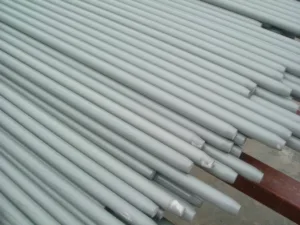Making fiberglass rods involves a specific process that generally includes the following steps:

how to make fiberglass rods
Material Preparation: Gather the raw materials needed, primarily fiberglass cloth or roving and a resin system (typically epoxy or polyester resin). You’ll also need a release agent to prevent the rod from sticking to the mold.
Mold Preparation: You’ll need a mold or mandrel, which is a cylindrical form around which the fiberglass is shaped. This mold should be coated with a release agent to ensure the fiberglass doesn’t stick to the mold after curing.
Laying the Fiberglass: Cut the fiberglass cloth or roving to the required length and wrap it around the mold. The thickness of the fiberglass and the number of layers depend on the desired strength and diameter of the final rod.
Resin Application: Mix the resin with its hardener according to the manufacturer’s instructions. Apply the resin to the fiberglass. This can be done either by dipping the fiberglass in resin or by brushing the resin onto the layers as they are applied. Ensure that the resin saturates the fiberglass completely to avoid air pockets and weak spots.
Curing: Allow the resin to cure. This process can be accelerated by using a controlled heat source, which also helps to ensure that the resin sets uniformly. Curing times can vary based on the type of resin and the ambient temperature.
Unmolding and Finishing: Once the resin is fully cured, remove the rod from the mold. The rod may require sanding to smooth any rough edges and achieve the desired finish. Additional coatings or treatments can be applied to protect the rod and enhance its performance.
Quality Checks: Perform inspections and testing to ensure the rod meets required specifications and quality standards. This might include bending tests, strength tests, and visual inspections.
This is a simplified overview, and specific requirements can vary depending on the intended use of the fiberglass rods and the production methods.
 info@unicomposite.com
info@unicomposite.com


























